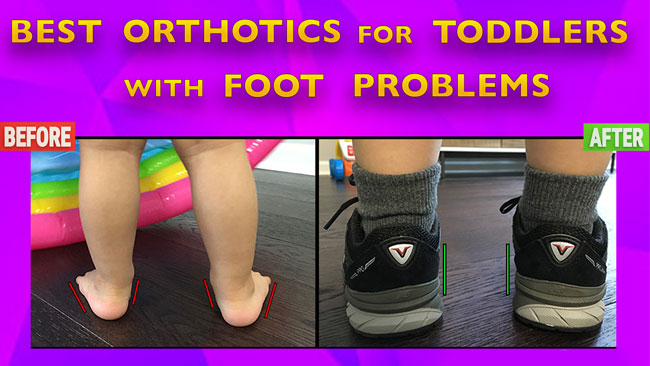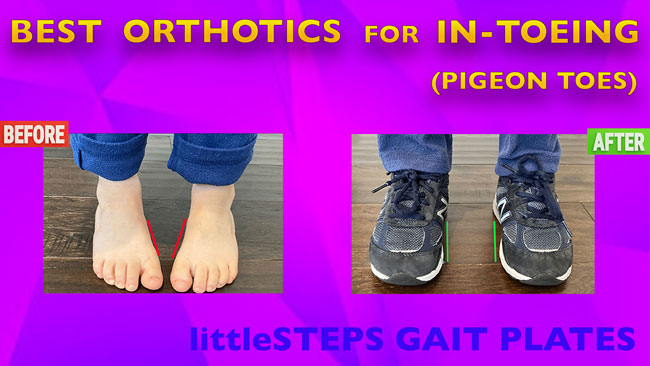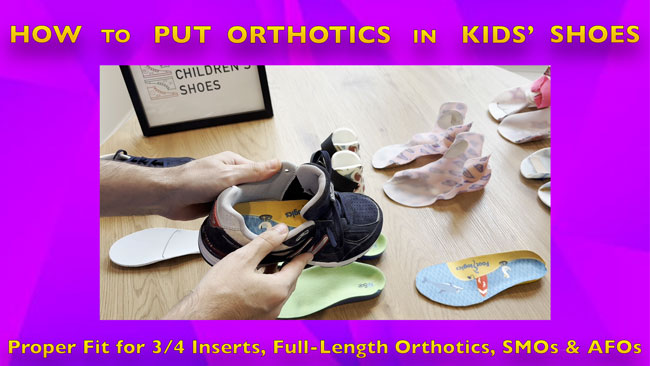What is the Difference Between 3/4 and Full Length Orthotics? – Choose the Right One for Your Child!
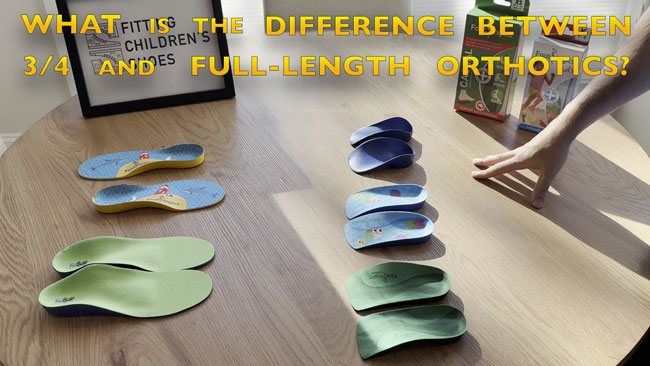
Has your child been diagnosed with flat feet or another foot condition that needs orthotic support? Many parents wonder whether 3/4 or full-length orthotics are the better choice—and it’s one of the most common questions I hear as a children’s shoe fitter. In this guide, I’ll break down the key differences between 3/4 and full-length orthotics and help you choose the best option for your child’s unique foot shape (narrow, medium, wide, or extra wide) and condition (flat feet, toe walking, low muscle tone, and more). With so many orthotic styles available, I am here to give you the clear, expert guidance you need to make the right decision.
What Are Full-Length Orthotics?
Full-length orthotics extend from the heel to the toes, covering the entire length of the foot. They are designed to provide comprehensive support and cushioning throughout the foot.
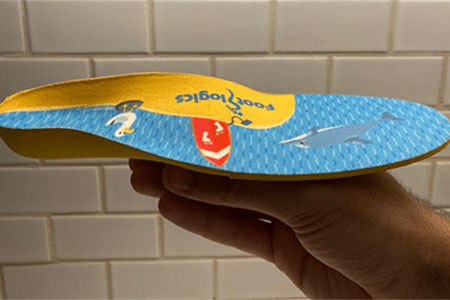
What Are 3/4 Length Orthotics?
3/4 length orthotics only cover the rear three-quarters of the foot, ending just behind the toes. These orthotics are more versatile and can fit into a wider variety of shoe styles (boots and dress shoes). They provide arch support and heel cushioning without extending to the toes.
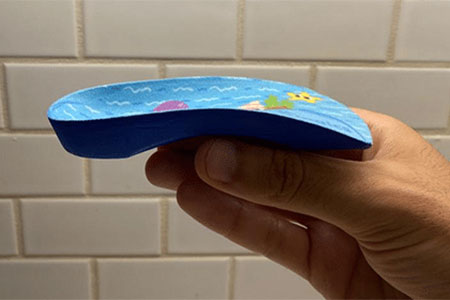
Do You Know Which One Your Child Needs?
Some medical professionals offer clear guidance by recommending the exact orthotic style a child needs. However, in many cases, parents are simply told their child needs orthotics—without any specifics on which type to choose. This lack of direction can leave families feeling confused and unsure about how to best support their child’s foot health.
The answer depends on your child’s unique foot shape, condition, and which areas need the most support. Some children benefit from extra heel stability, while others need more cushioning or arch support. Understanding your child’s specific needs is key to choosing the most effective orthotic.
Advantages and Disadvantages of Wearing 3/4 Length Orthotics
✅ Shoe Compatibility. 3/4 length orthotics are generally more compatible with various shoe types, including casual shoes and dress shoes. In contrast, full-length orthotics may require more spacious shoes, like athletic footwear in wide or extra wide widths, due to their size. With 3/4 length orthotics you don’t have to worry about removing the original insoles of the shoes (in most cases).
✅ Ideal for Various Foot Shapes. If your child has a tricky foot shape—like wide or extra wide feet with a high instep—this orthotic is a great choice. Its design allows the foot to sit deeper inside the shoe, creating a more secure and comfortable fit without added pressure on the top of the foot.
❌ If the shoes aren’t securely tied or the Velcro straps aren’t snug, the 3/4 length orthotic can shift around inside the shoe—causing rubbing, slipping, or general discomfort.
Advantages and Disadvantages of Wearing Full-Length Orthotics
✅ Extra Comfort Under the Toes. Since this orthotic extends all the way to the toes, it offers added cushioning and support under the front of the foot—helping your child stay comfortable during walking, running, and playtime.
✅ Trimming Available. Depending on the material, many full-length orthotics can be easily trimmed at the front with scissors, allowing you to customize the fit to your child’s shoes.
❌ Some full-length orthotics can take up too much space inside the shoe, making it harder to get a proper fit and leaving your child’s feet feeling cramped.
Ultimately, the best type of orthotic depends on how much your child’s feet pronate and where they need the most support. Keep in mind—not all full-length orthotics are bulky. Some offer excellent stability and cushioning while maintaining a slim, low-profile design that fits easily into most shoes.
Not Sure Which Orthotics Are Right for Your Child?
I’m here to help! Just share a few details about your child’s foot condition (flat feet, toe walking, low muscle tone, weak ankles, etc.), their foot shape (narrow, medium, wide, or extra wide), and the country you’re contacting me from. I’ll personally guide you toward the orthotic that’s most likely to provide the best support and comfort for your child’s unique needs: customerservice@fittingchildrenshoes.com
Watch My Youtube Video to Better Visualize the Difference
Are you still wondering whether 3/4 length or full-length orthotics are better for your child? In my YouTube video, I’ll show you the key differences between the two, explain how each one fits inside different types of shoes, and help you understand which might be the best choice for your child’s feet. Let’s take a closer look!
Top Resources for Children Who Need Orthotics
While there isn’t a universal orthotic that suits all children, since each child’s foot shape and needs are unique, I’ve put together a few helpful guides to make it easier for you to determine which type of orthotic may be best for your child—whether they have mild or moderate to severe pronation. These resources are designed to give you clarity and confidence when it comes to supporting your child’s foot health.

